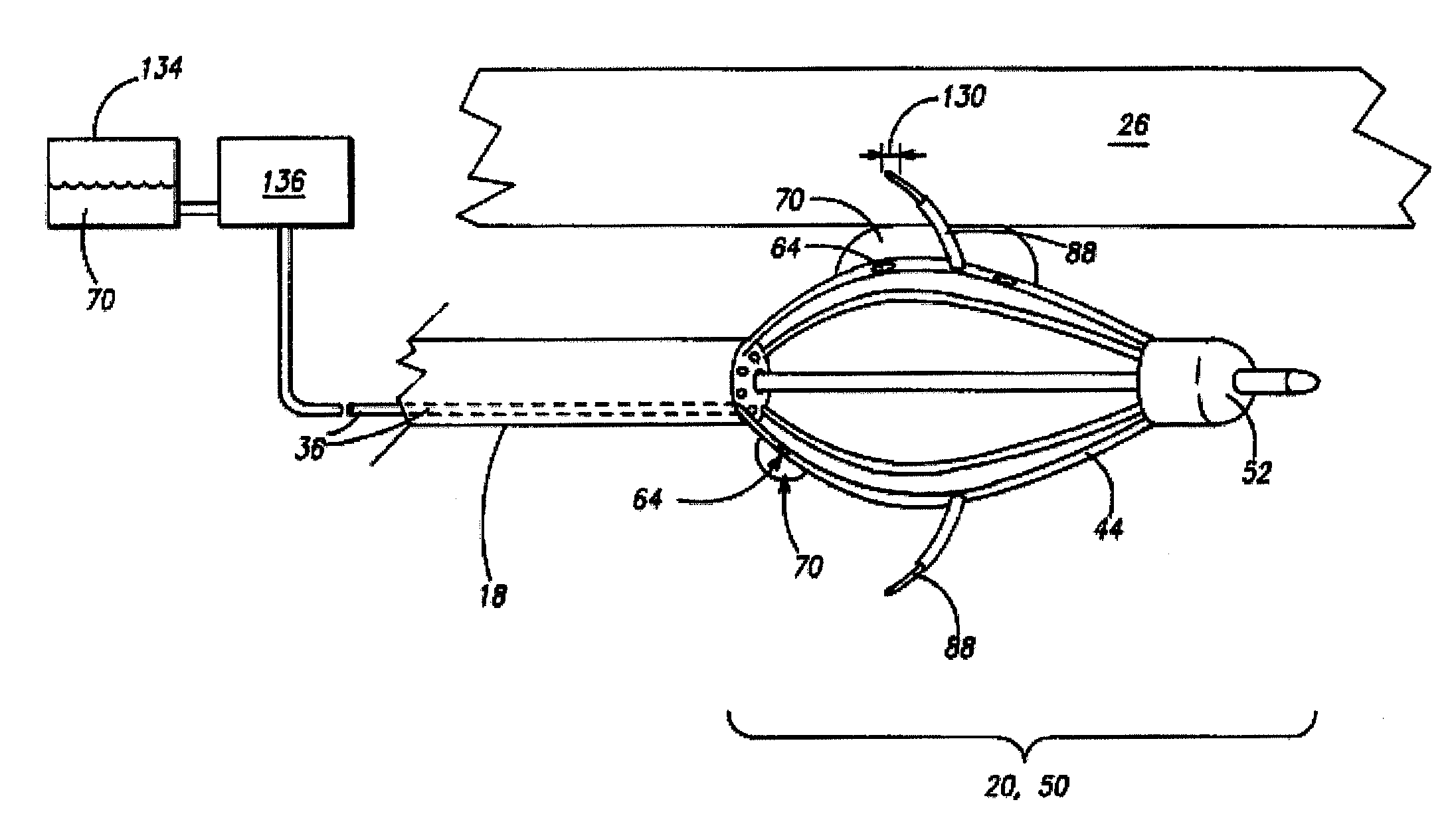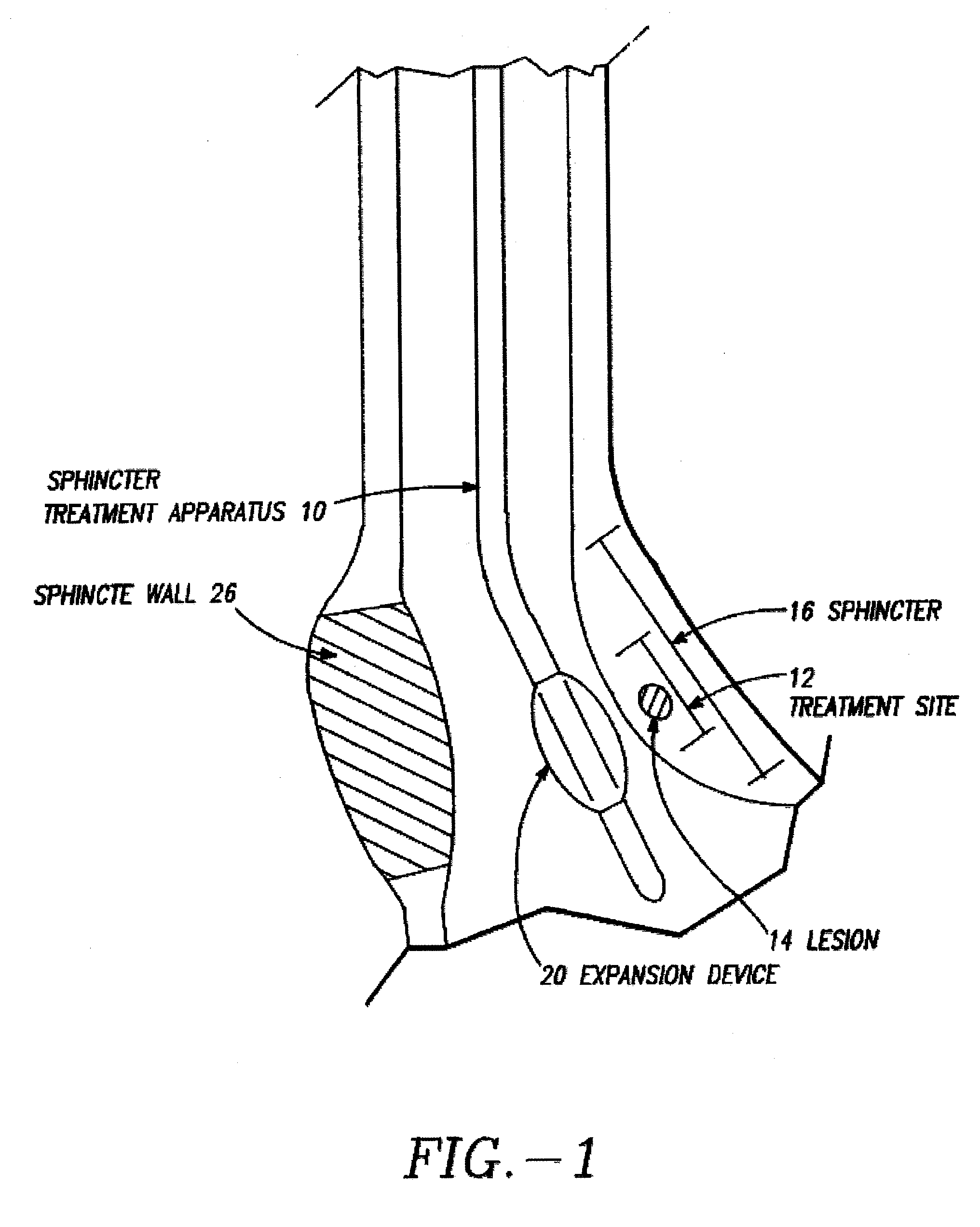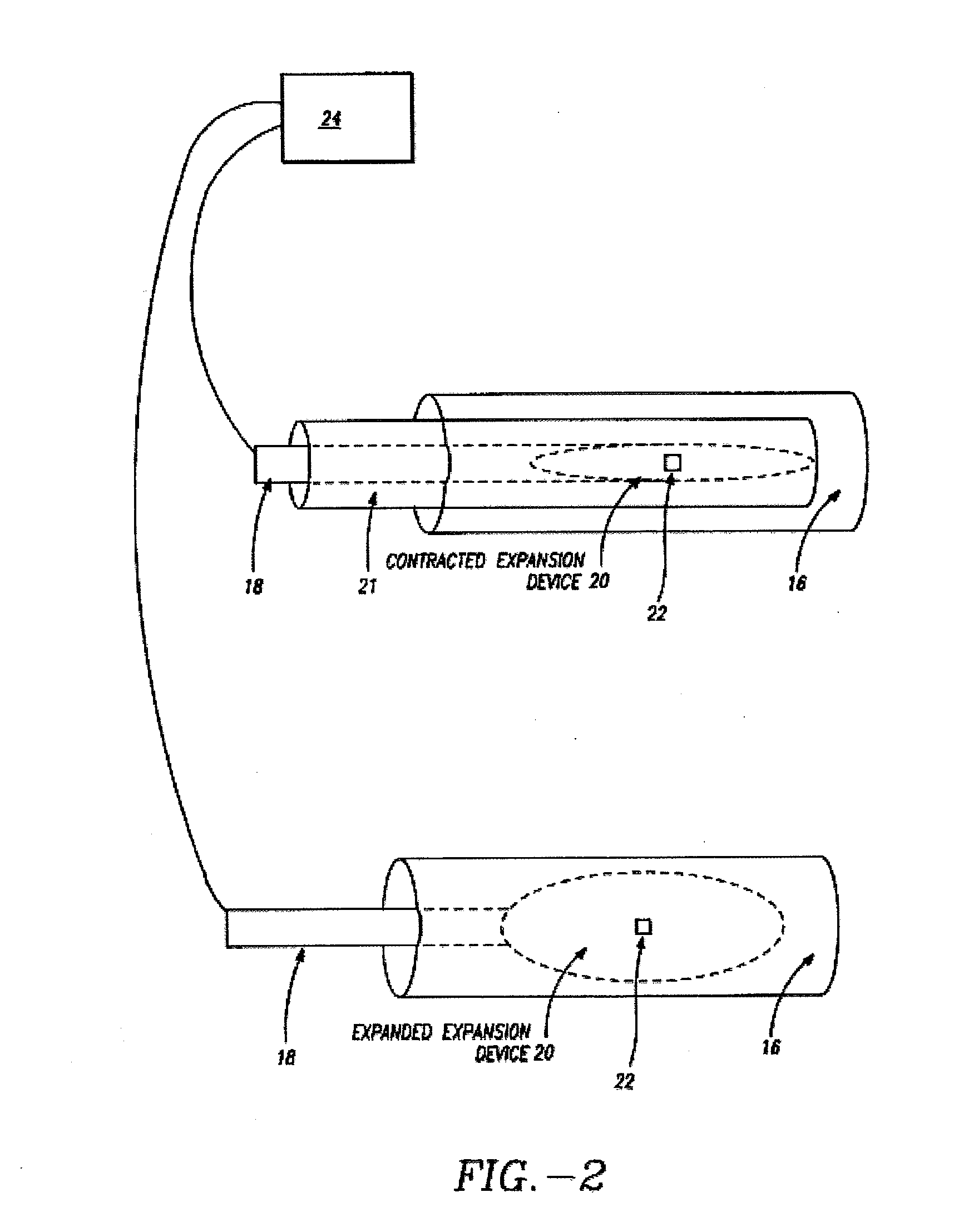Methods and devices for treating urinary incontinence
a technology for urinary incontinence and methods, applied in the direction of ultrasonic/sonic/infrasonic diagnostics, catheters, applications, etc., can solve problems such as contracting or changing elasticity, and achieve the effect of modifying tissue elasticity and shrinking of tissu
- Summary
- Abstract
- Description
- Claims
- Application Information
AI Technical Summary
Benefits of technology
Problems solved by technology
Method used
Image
Examples
Embodiment Construction
[0078]The devices described herein may be referred to treatment devices, as treatment apparatus, as sphincter treatment devices, as sphincter treatment apparatus, or as urethra treatment devices. Any of these devices may be used to treat a body lumen, including, but not limited to the urethra and the gastrointestinal tract. In general, these devices include an elongate body, an expandable distal region, and a plurality of energy-emitting regions (e.g., needle electrodes).
[0079]For example, referring now to FIGS. 1 and 2, one embodiment of treatment apparatus 10 that is used to deliver energy to a treatment site 12 to produce lesions 14 in lumen, including lumen having a sphincter 16, such as the lower esophageal sphincter (LES), comprises a flexible elongate shaft 18, also called shaft 18, coupled to a expansion device 20, in turn coupled with one or more energy delivery devices 22. Energy delivery devices 22 are configured to be coupled to a power source 24. The expansion device 20...
PUM
 Login to View More
Login to View More Abstract
Description
Claims
Application Information
 Login to View More
Login to View More - R&D
- Intellectual Property
- Life Sciences
- Materials
- Tech Scout
- Unparalleled Data Quality
- Higher Quality Content
- 60% Fewer Hallucinations
Browse by: Latest US Patents, China's latest patents, Technical Efficacy Thesaurus, Application Domain, Technology Topic, Popular Technical Reports.
© 2025 PatSnap. All rights reserved.Legal|Privacy policy|Modern Slavery Act Transparency Statement|Sitemap|About US| Contact US: help@patsnap.com



